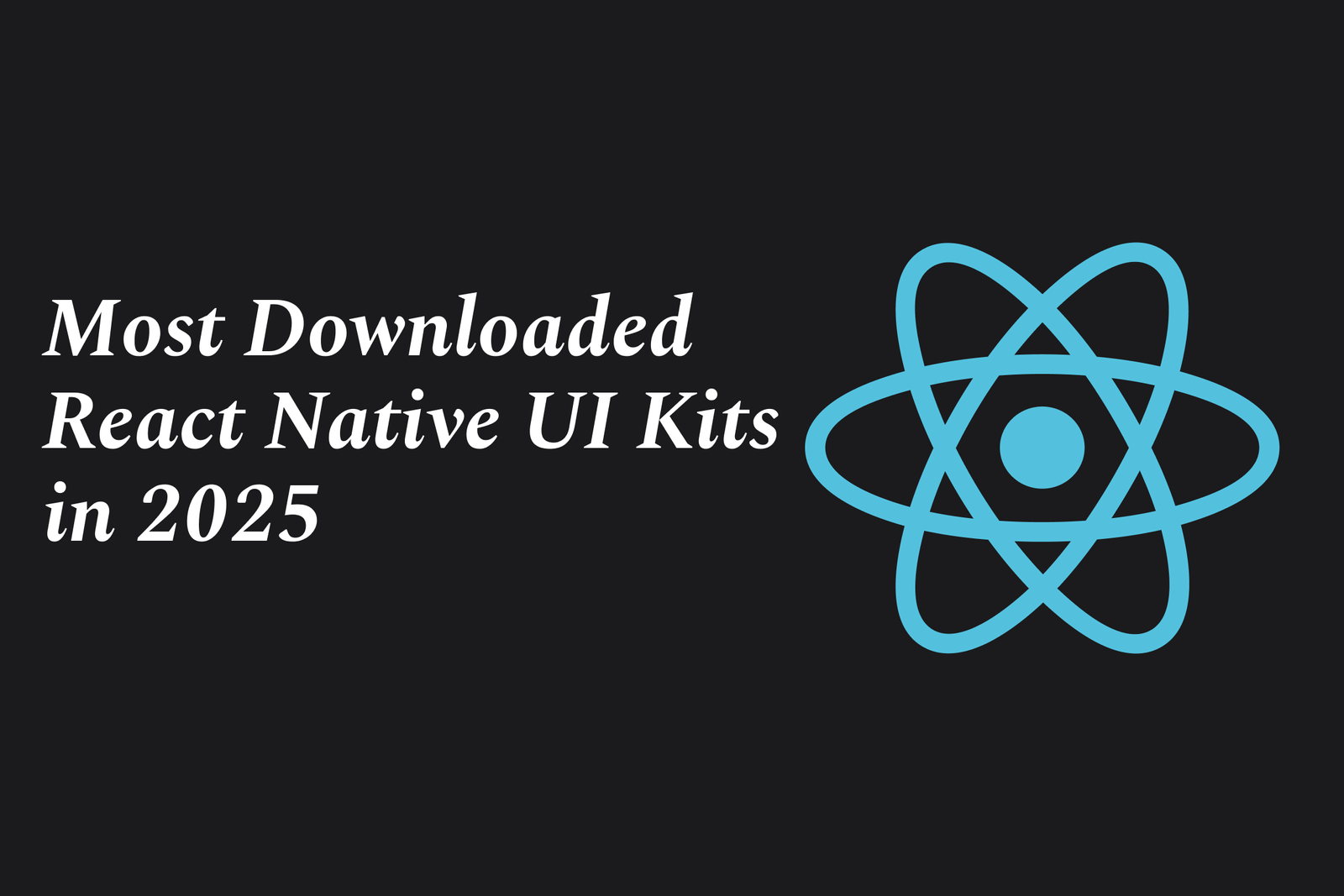Most Downloaded React Native UI Kits in 2025
Most downloaded React Native UI kits in 2025 offer ready-made, customizable components that speed up app development with consistent designs and cross-platform support. Popular kits like Gluestack UI, React Native Elements, and React Native Reusables enhance efficiency and user experience.
Most Downloaded React Native UI Kits in 2025
1 ) Introduction to React Native UI Kits
React Native remains a premier framework for building cross platform mobile applications on iOS, Android, and the web. Despite its robustness, designing polished and user friendly interfaces can be time consuming. React Native UI libraries offer a solution by providing pre built, customizable components that drastically reduce development time while ensuring visual consistency and a professional look.
2 ) Benefits of Using React Native UI Libraries
Time saving: Ready to use components eliminate the need to develop UI parts from scratch.
Visual Consistency: Components adhere to cohesive design principles for professional aesthetics.
Ease of Use: Well documented libraries with examples facilitate quick adoption.
Active Maintenance: Open source libraries often receive continuous updates and community support.
Cross platform compatibility: Components work seamlessly across iOS and Android devices.
3 ) Top React Native UI Kits in 2025
1 ) Gluestack UI
A modern, lightweight UI library embracing Tailwind CSS (NativeWind) integration with zero extra dependencies, enabling rapid development with high customization and full React Server Components compatibility. Ideal for React, Next.js, and React Native projects, it supports theme customization and facilitates design consistency.
2. React Native Elements
Popular for its extensive range of customizable UI components such as buttons, cards, and forms. It offers cross platform support and ease of use with clear documentation, empowering developers to build professional apps efficiently.
3. React Native Reusables
An open source library designed with NativeWind v4 for accessibility and performance. It provides universal components and utilities that work across Android, iOS, and web, featuring built in dark mode and no third party dependencies, promoting incremental adoption and code sharing.
Additional Noteworthy Libraries
Other prominent libraries include Tamagui, React Native Paper, React Native UI Kitten, Shoutem UI, and more, each with unique strengths in customizability, accessibility, and comprehensive component coverage.
4 ) Choosing the Right UI Kit
When selecting a React Native UI library, consider the following factors:
Cross platform compatibility for web and mobile
Ease of integration and learning curve
Customization flexibility and theming capabilities
Community support and maintenance status
Accessibility compliance to ensure inclusive design
5 ) Conclusion
Using React Native UI libraries in 2025 dramatically accelerates app development, reduces design inconsistencies, and enhances user experiences. Gluestack UI, React Native Elements, and React Native Reusables stand out as top choices for developers seeking modern, customizable, and efficient UI solutions. Choosing the right UI kit depends on project requirements, but leveraging these libraries assures faster delivery of visually appealing and functional applications.
https://justacademy.in/news-detail/flutter-plugin-security-best-practices
https://justacademy.in/news-detail/android-app-developer-conference-highlights
https://justacademy.in/news-detail/flutter-in-fintech-app-development
https://justacademy.in/news-detail/android-notification-channel-changes
https://justacademy.in/news-detail/android-language-support-updates
Related Posts
Java supports GDPR and data privacy by enabling secure data handling through encryption, controlled access, and precise data management. It allows developers to minimize PII exposure, ensure data confidentiality, and design workflows that comply with data protection regulations effectively.
Java code quality tools have evolved to include advanced static analysis, integrated security checks, and AI-powered code reviews. These updates help developers detect bugs, enforce coding standards, and enhance security, streamlining the development process and improving overall code reliability.
Java remains a cornerstone in big tech companies, evolving with modern features like records, pattern matching, and virtual threads. Its robust ecosystem, enhanced performance, and growing AI integrations keep it vital for both legacy systems and innovative new projects.
Java and CI/CD pipeline optimizations streamline Java application development by automating builds, tests, and deployments. They improve efficiency through parallelization, caching, and secure secrets management, enabling faster feedback loops and more reliable, scalable software delivery.
Java supports modern cryptography standards through its flexible Java Cryptography Architecture (JCA), enabling integration of advanced algorithms like AES, EdDSA, and post-quantum tools. Libraries like Bouncy Castle offer FIPS-certified, hardware-accelerated implementations for secure development.
Java 23 enhances record patterns by enabling concise, direct destructuring of record components within pattern matching, simplifying type checks and data extraction. This improvement boosts code readability and expressiveness by reducing boilerplate in handling immutable data classes.
Java remains a top choice for mobile app backends, powering scalable, secure, and high-performance server-side solutions. Latest trends include cloud-native microservices, reactive programming, and enhanced JVM optimizations, enabling efficient, flexible, and robust mobile backend development.
Java SE 24 and LTS Java SE 21 offer enhanced features and performance, while Apache Spark 4.0.0 introduces Scala 2.13 support and advanced ML and SQL capabilities. Together, they empower developers to build scalable, high-performance data applications with modern tools.
JUnit 5 modernizes Java testing with a modular architecture, improved assertions, and seamless Java 8+ support. Beyond JUnit, tools like Mockito and AssertJ enhance mocking and assertions, creating a powerful, flexible ecosystem for writing clean, efficient Java unit tests.
Java plays a pivotal role in cloud automation tools by providing a robust, platform-independent language used to build scalable automation frameworks like Jenkins and Selenium, enabling efficient CI/CD pipelines, testing, and orchestration across diverse cloud environments.










